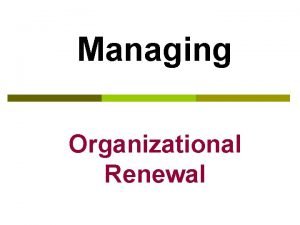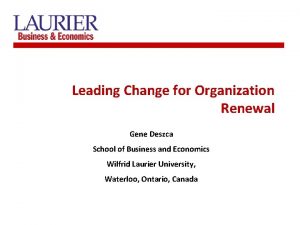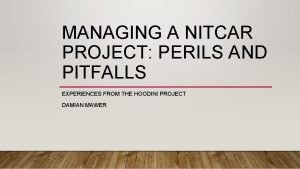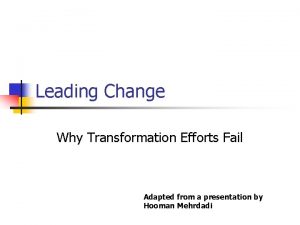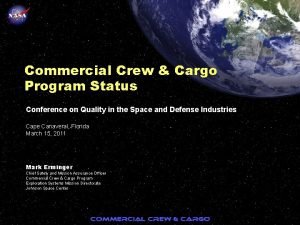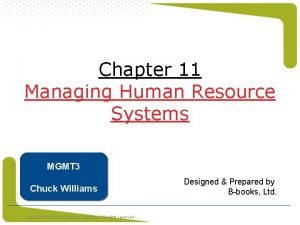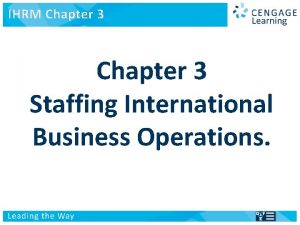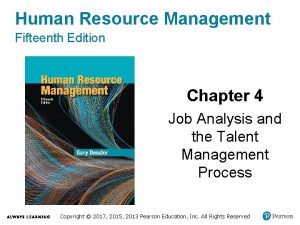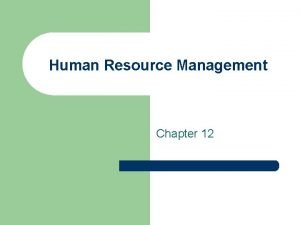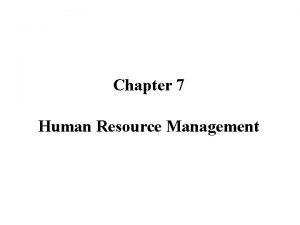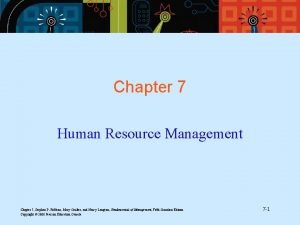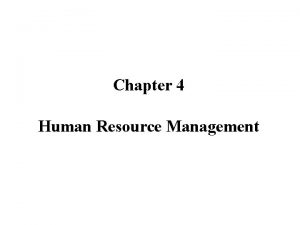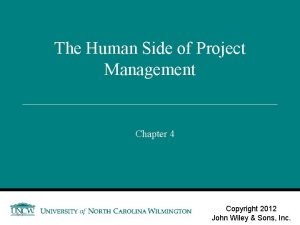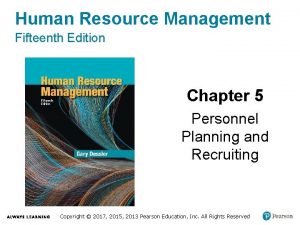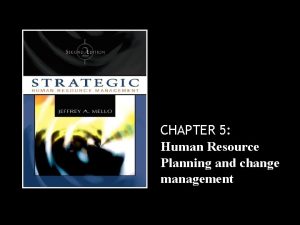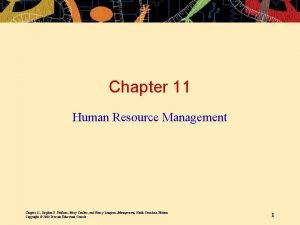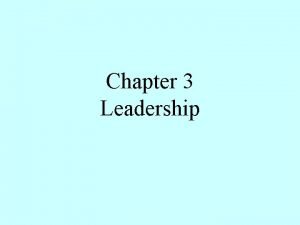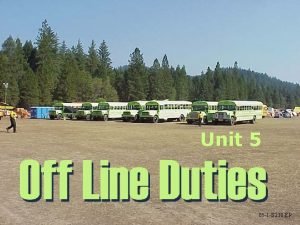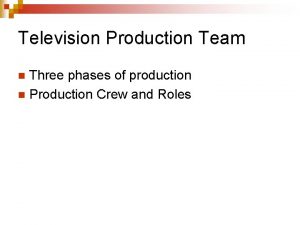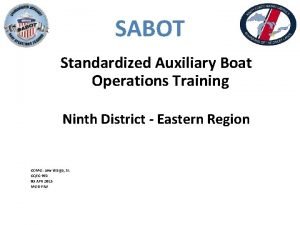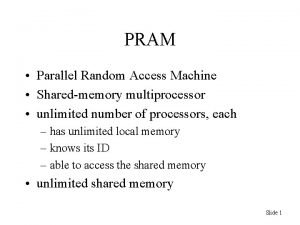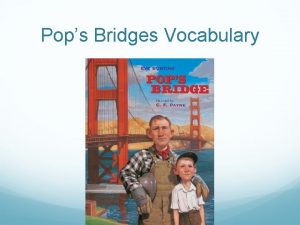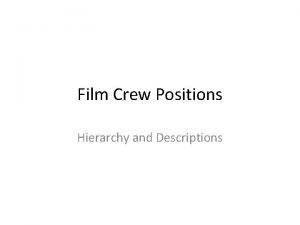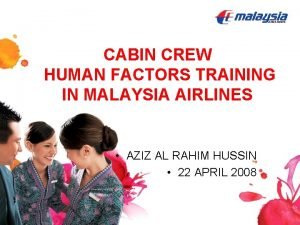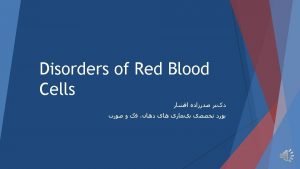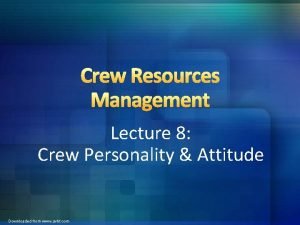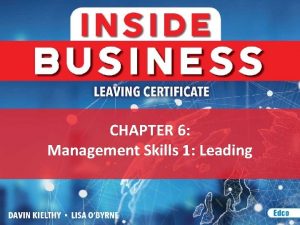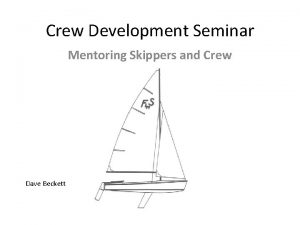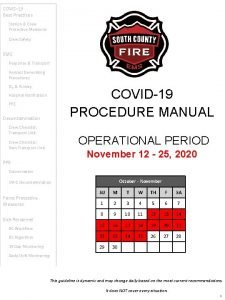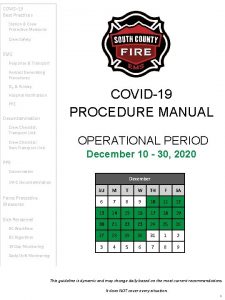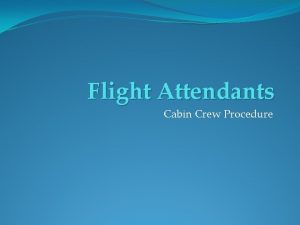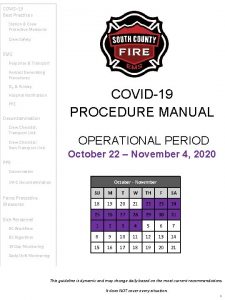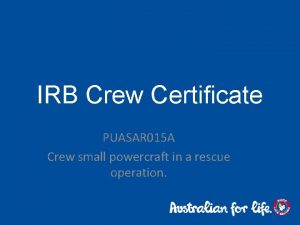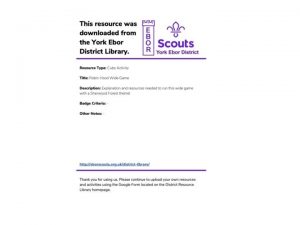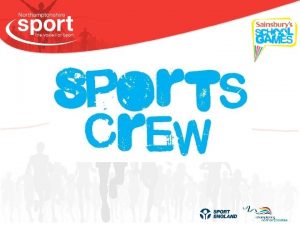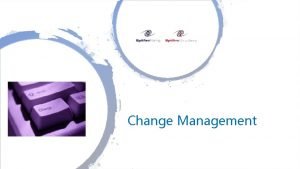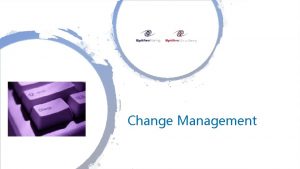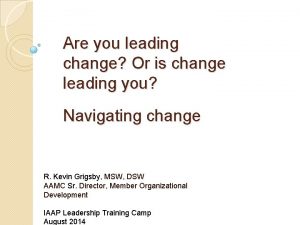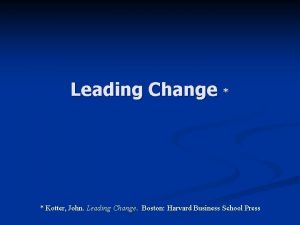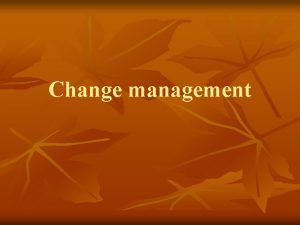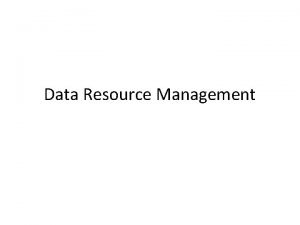Chapter 19 Crew Resource Management and Leading Change















































- Slides: 47

Chapter 19 Crew Resource Management and Leading Change

Fire Officer I Objectives • Discuss the origins of crew resource management (CRM). • Discuss the concepts involved in researching and validating CRM. • List Dupont’s “dirty dozen” human factors that contribute to tragedy.

Fire Officer I Objectives • Describe the six-point CRM model that can be used in the fire service. • Discuss the fire officer’s role in recommending change within a department.

Fire Officer II Objectives • Discuss the origins of crew resource management (CRM). • Discuss the concepts involved in researching and validating CRM. • List Dupont’s “dirty dozen” human factors that contribute to tragedy.

Fire Officer II Objectives • Describe the six-point CRM model that can be used in the fire service. • Discuss the fire officer’s role in recommending change within a department.

Introduction • Crew resource management (CRM) is a behavioral approach to reducing human error in high-risk or high-consequence activities. • Leading change: recommending changes and developing a process to establish a change

Origins of Crew Resource Management • In 1978, United Airlines Flight 173 crashed because the people flying it became engrossed in a burned-out light bulb and did not pay attention to the fact that the plane was running low on fuel. – In response, NASA developed crew resource management.

Origins of Crew Resource Management • CRM became mandatory training. • It was resisted by senior pilots until a spectacular crash landing in 1989. – The crew attributed their success in this incident to their CRM training.

Researching and Validating CRM Concepts • The aviation industry’s 80 percent reduction in accidents is partly attributable to CRM. • CRM trains team members how to achieve maximum mission effectiveness in a time-constrained environment under stress.

Human Error • Gordon Dupont noted similarities between errors in the cockpit and in the maintenance hanger. • Dupont’s “dirty dozen”: list of reasons and ways humans make mistakes

Human Error • The “dirty dozen” – Lack of communication – Complacency – Lack of knowledge – Distraction – Lack of teamwork – Fatigue – Lack of resources – Pressure – Lack of assertiveness – Stress – Lack of awareness – Norms

• Dr. James Reason took a systems approach. – High-tech systems have many defensive layers. – Each layer is like a slice of Swiss cheese. Reproduced from Br Med J, J. Reason, vol. 320, pp. 768 -770, © 2000 with permission from BMJ Publishing Group Ltd. Human Error

Active Failures and Latent Conditions • Two reasons why holes appear in the layer of defense: – Active failures – Latent conditions • May lie dormant within a system for years

• CRM is an error management model with three activities. • Mitigation: action taken by responders to minimize the effect of an emergency Courtesy of Dr. Robert Helmreich Error Management Model

The CRM Model • The fire service CRM model covers: – Communication skills – Teamwork – Task allocation – Critical decision making – Situational awareness – Debriefing

The CRM Model • Everyone must recognize the following: – No one is infallible. – Technology is fallible. – Catastrophes result from a chain of events. – Everyone is obligated to speak up when they see something wrong.

The CRM Model • Everyone must recognize the following (cont’d): – People who work together effectively are less likely to have accidents. – Every member of the team must participate.

Communication Skills • Communication: the successful transfer and understanding of a thought • Airline disaster miscommunication: – Misinterpretation of instructions – “Fighter pilot” mentality in captains – Lack of assertiveness by crew members – Cockpit distractions

Communication Skills • Develop a standard language and teach appropriate assertive behavior. • In a fire apparatus, the crew should exchange only pertinent information. • A CRM-enriched environment encourages the freedom to question.

Communication Skills • Inquiry and advocacy are skills that promote synergy. – They require practice and patience. – Use buzzwords to signal discomfort. • Opens the door to inquiry and advocacy • Reserved for situations involving risk of injury

Communication Skills • Assertive statement process: – Use an opening/attention getter. – State your concern. – State the problem as you see it. – State a solution. – Obtain agreement or buy-in.

Teamwork • Leadership – Must earn trust and respect and have leadership skills – Respect is based on competencies: • Personal • Technical • Social

Teamwork • Mentoring – Help others develop skills – Lead by example – Admit to making mistakes – Share knowledge

Teamwork • Handling conflict – Focus on what is right, not who is right. – Establish an open climate for error prevention.

Teamwork • Responsibility – Final decision making rests with the leader. – Foundation to manage emergency operations: • Risk a lot to save a savable life. • Take a calculated risk to save savable property. • Risk nothing to save what is already lost.

Teamwork • Followership – Followers should perform self-assessment in four areas: • • Physical condition Mental condition Attitude Understanding human behavior

Teamwork • Each individual must have: – Healthy appreciation for personal safety – Healthy concern for safety of the crew – Respect for authority – Willingness to accept orders – Knowledge of the limits of authority

Teamwork • Each individual must have: – Desire to help the leader be successful – Good communication skills – Ability to provide constructive feedback – Ability to admit errors – Ability to keep ego in check

Teamwork • Each individual must have: – Ability to balance assertiveness and authority – Learning attitude – Ability to perform demanding tasks – Adaptability

Task Allocation • Task allocation: dividing responsibilities in a way to accomplish them effectively – Safety is compromised with task overload. • Knowing one’s own limits and the capacity of the team is the first step.

• Performance is enhanced through training classes and exercises. © Jones & Bartlett Learning. Photographed by Glen E. Ellman Task Allocation

Critical Decision Making • Emergency scenes demand rapid decision making by the crew leader. – Fire officers and military combat officers use a similar decision-making process. – Two decision-making models: • Recognition-primed decision making (RPD) • Naturalistic decision making

Critical Decision Making • Decision making is improved through: – Gaining experience – Training constantly – Improving communication skills – Engaging in preincident preplanning

Critical Decision Making • Communication provides: – Enhanced problem identification – Better incident control – Improved situational awareness – More rapidly identified hazards – Rapidly assessed resource capability

Critical Decision Making • Communication provides (cont’d): – More rapidly developed solutions – Improved decision making – Reduced surprises and unanticipated problems

Situational Awareness • Situational awareness: accurate perception of what is going on around you – Affects performance and decision making – When not maintained, errors occur

Maintaining Emergency Scene Situational Awareness • • • Fight the fire. Assess problems in the time available. Gather information from all sources. Choose the best option. Monitor results and alter the plan.

Situational Awareness Loss Factors • • • Ambiguity Distraction Fixation Overload Complacency • Improper procedure • Unresolved discrepancy • Nobody fighting the fire

Recommending Change • The fire officer is in the best position to lead change. – The fire officer has the best view of opportunities, challenges, and barriers. – The CRM assertive statement process provides a model for discussing sensitive or consequential issues.

Recommending Change • Five disconnects in implementing change: 1. 2. 3. 4. 5. Culture change is viewed as a threat. Bad behaviors and attitudes are tradition. Safety and mission are imbalanced. Voices of safety leadership are muffled. Lessons have not been embraced.

Recommending Change • Change begins with the postincident debriefing. 1. 2. 3. 4. 5. Just the facts What did you do? What went wrong? What went right? What are you going to do about it?

Implementing Change • The fire officer has the best opportunity to improve the safety and effectiveness of fire operations. – The CRM approach concentrates on working conditions. – It tries to build defenses to avert errors or mitigate their effects.

Implementing Change • Firefighting shares some features in common with other high-reliability organizations. – High-reliability organizations that have embraced CRM have 70 -89 percent fewer incidents, accidents, and injuries.

Summary • CRM is a behavioral approach to reducing human error in high-risk or high-consequence activities. • Leading change involves recommending changes and developing a process to establish a change. • CRM was developed by NASA in 1979.

Summary • Dupont determined that a “dirty dozen” of human factors contribute to tragedy. • Reason identified two precursors to holes in defense: active failures and latent conditions. • CRM is an error management model.

Summary • A six-point CRM model serves the fire service well. • Developing a standard language, maintaining a “sterile cockpit, ” and teaching appropriate assertive behavior reduce errors from miscommunication. • Members must work together.

Summary • Task overload occurs when the fire officer exceeds his or her capacity. • CRM promotes team involvement. • The loss of situational awareness may lead to calamity. • The fire officer is in the best position to lead change within the fire department.
 Objectives of roving frame
Objectives of roving frame Leading change and organizational renewal
Leading change and organizational renewal Leading change and organizational renewal
Leading change and organizational renewal The perils and pitfalls of leading change case solution
The perils and pitfalls of leading change case solution Apollo maritime group
Apollo maritime group Im safe checklist
Im safe checklist Leading change: why transformation efforts fail
Leading change: why transformation efforts fail Leading through change presentation
Leading through change presentation Forestry and resource management chapter 11 answers
Forestry and resource management chapter 11 answers Battling over clayoquot big trees
Battling over clayoquot big trees Resource loading vs resource leveling
Resource loading vs resource leveling Perbedaan resource loading dan resource levelling
Perbedaan resource loading dan resource levelling Time management human resources
Time management human resources Retail management retail store organizational chart
Retail management retail store organizational chart Literal sense in hrm
Literal sense in hrm Commercial crew and cargo program
Commercial crew and cargo program Corkscrew regional ecosystem watershed
Corkscrew regional ecosystem watershed Hrm chapter 2
Hrm chapter 2 Chapter 9 human resource management
Chapter 9 human resource management Chapter 11 human resource management
Chapter 11 human resource management New approaches to organizing hr
New approaches to organizing hr Human resource management lecture chapter 1
Human resource management lecture chapter 1 Human resource management lecture chapter 1
Human resource management lecture chapter 1 Human resource management lecture chapter 1
Human resource management lecture chapter 1 Virtual assignment in ihrm
Virtual assignment in ihrm Chapter 4 job analysis and the talent management process
Chapter 4 job analysis and the talent management process Functions of hrm
Functions of hrm Chapter 7 human resource management
Chapter 7 human resource management Chapter 7 human resource management
Chapter 7 human resource management Human resource management chapter 4
Human resource management chapter 4 Project management chapter 4
Project management chapter 4 Replacement chart
Replacement chart Human resource management chapter 5
Human resource management chapter 5 Chapter 11 human resource management
Chapter 11 human resource management Chapter 18 organizational change and stress management
Chapter 18 organizational change and stress management Chapter 5 principles of voice leading answers
Chapter 5 principles of voice leading answers Leading a healthy life chapter 1
Leading a healthy life chapter 1 Leading chapter 3
Leading chapter 3 Chapter 1 leading a healthy life
Chapter 1 leading a healthy life Crew method weeding
Crew method weeding S-230 crew boss final exam answers
S-230 crew boss final exam answers Television production crew
Television production crew Piw crew
Piw crew Crew pram
Crew pram Bridges vocabulary
Bridges vocabulary What is a best boy grip
What is a best boy grip Cabin crew training course in malaysia
Cabin crew training course in malaysia Anemia
Anemia

